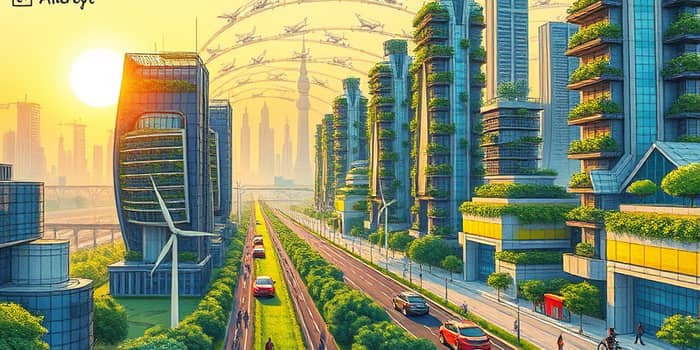
As the world accelerates into an era of unprecedented urban growth, cities stand at the crossroads of innovation and resilience. With over half the global population already residing in urban areas, and projections indicating that nearly 68% will do so by 2050, the stakes for sustainable and equitable development have never been higher.
The panoramic sweep of urbanization is reshaping societies in Asia, Africa, and beyond. In 1950, urban living was predominantly a hallmark of high-income countries; today, many nations are undergoing rapid transformation as rural habitats yield to burgeoning metropolises.
Despite these advances, demographic nuances persist. India, for example, is expected to surpass just 50% urbanization by mid-century, illustrating that the pace and nature of city expansion will vary by region. Understanding these shifts is crucial for policymakers and investors alike.
Modern cities are transforming into living laboratories driven by cutting-edge technology. Urban managers leverage remote and real-time monitoring systems to optimize utilities like water and power. Smart grids and intelligent street lighting not only cut costs but also reduce environmental impact.
Three pillars underpin this technological revolution:
The global smart city IoT market is projected to grow at an 18.1% annual rate, reaching US$312.2 billion by 2027. Parallelly, demand for data centers is soaring, fueled by artificial intelligence and ubiquitous connectivity.
Resilience is no longer a buzzword but a guiding principle. Urban areas face mounting challenges from climate change, resource scarcity, and social vulnerabilities. To counter these threats, cities are embracing ecological design at every scale.
Initiatives include:
By weaving biodiversity into the urban fabric, municipalities not only improve air quality but also foster healthier, more vibrant communities capable of adapting to unforeseen shocks.
The housing affordability crisis demands bold zoning reforms. Cities are exploring strategies to densify without sacrificing quality of life, addressing both supply constraints and socio-economic equity.
Key measures include:
Mixed-use neighborhoods thrive where residents can live, work, and play in close proximity. These developments support mixed-use neighborhoods and walkable communities, reducing commuting times and fostering social cohesion.
As urban populations swell, mobility must evolve. The vision of mobility as a service (MaaS) shifts emphasis from private car ownership to shared, efficient modes of transit.
Forward-looking cities prioritize intelligent and sustainable mobility options such as expanded cycling infrastructure, pedestrian-first streets, and autonomous electric shuttles. Despite fiscal pressures on transit agencies, innovations in dynamic pricing, microtransit, and public-private partnerships are emerging to secure new funding streams and enhance service quality.
Investors are closely tracking models that promise resilience and growth. The following frameworks are gaining traction:
This matrix highlights how urban strategies intertwine community wellbeing with economic vitality. Notably, industrial real estate and data center assets are outpacing traditional sectors, propelled by e-commerce and AI adoption. Meanwhile, senior housing and suburban innovation sectors are adapting to demographic shifts, and retail is reinventing itself through experiential formats integrated with online platforms.
Meaningful progress requires coherent policy and active citizen participation. Federal and regional initiatives that incentivize sustainability, bolster public transit, and streamline zoning reforms play a pivotal role in shaping market dynamics.
Robust community engagement fosters a sense of ownership and ensures that projects reflect local needs. Co-design workshops, participatory budgeting, and digital platforms for feedback are becoming standard practices in resilient urban planning. Such collaboration underpins community engagement and co-design strategies that yield more inclusive outcomes.
The path toward the city of tomorrow is complex and multifaceted, demanding a holistic approach that marries technology, sustainability, and social equity. As urban markets evolve, stakeholders must embrace innovation while honoring the diverse voices that make cities vibrant.
By harnessing quality of life improvements through smart infrastructure, green design, and equitable policy, we can pave the way for urban centers that thrive economically, protect the environment, and uplift all residents. The future belongs to cities that dare to adapt, collaborate, and envision new possibilities.
References













